This post was started in response to these photographs that my sister-in-law, Linda, sent from Indiana.
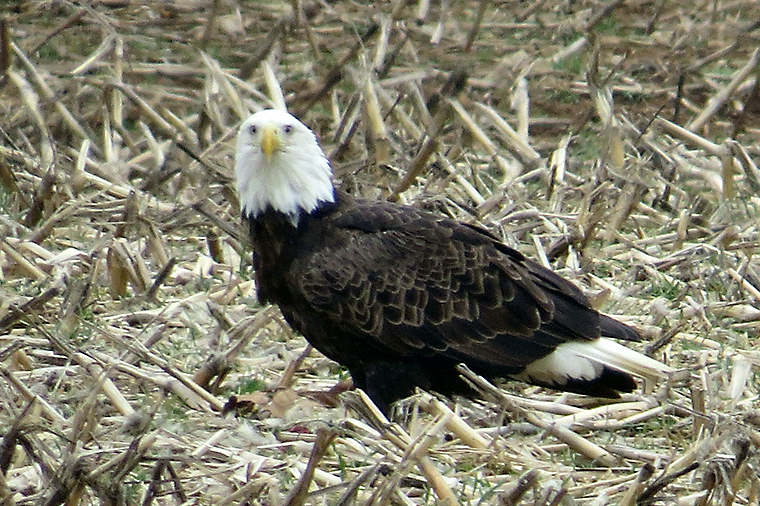
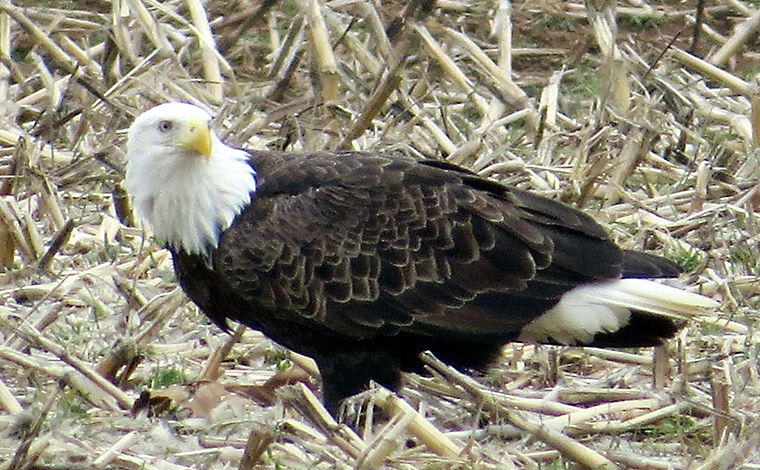
This is a Bald Eagle (Haliaeetus leucocephalus) that my brother, Charlie, spotted in a field of corn stubble near their Southern Indiana home. He went home and got Linda and her camera. Luckily, the eagle was eating some sort of prey and stayed around until they got back.
We grew up in Indiana, and these photographs of the eagle made me think of the changes in types and numbers of wildlife that have occurred since we were children. There were certainly no Bald Eagles in Southern Indiana when we were young.
The rest of the photographs in this post were taken by Linda in their back yard.
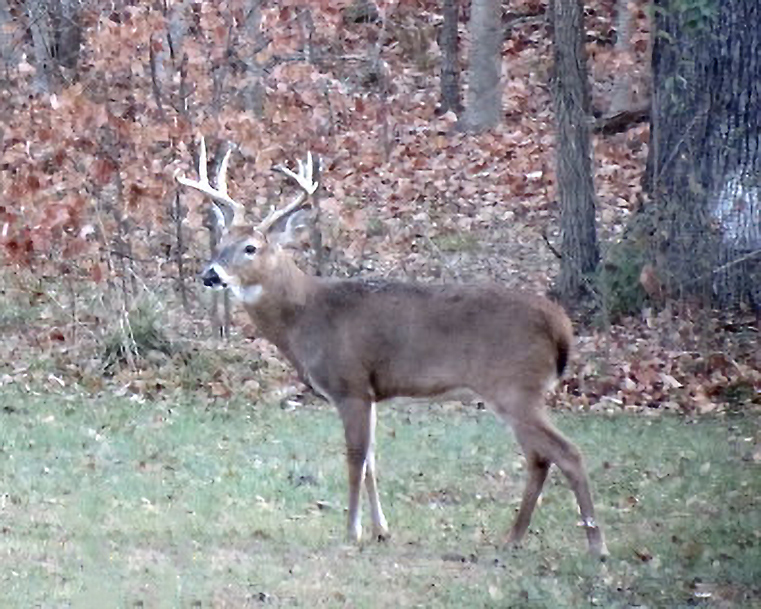
This magnificent White-tailed Deer (Odocoileus virginianus) buck was wandering through their back yard. While-tailed Deer have recovered in a big way since they were exterminated in our part of Indiana in the late 19th and early 20th centuries.
When I was about 10 years old, an effort was made to reintroduce White-tailed Deer in our area. On Sunday afternoons, our father would sometimes take us driving through the State Park where some deer had been introduced. We hoped to catch a glimpse of one of the elusive animals. Now they are plentiful enough to sometimes be a pest. They are a hazard on roadways, and they sometimes eat ornamental or cultivated plants.
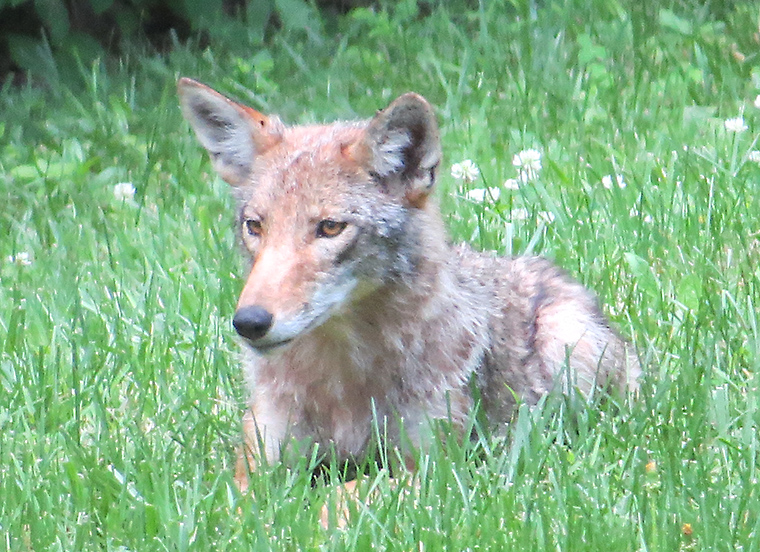
This Coyote (Canis latrans) was lurking in their back yard for quite a while. It seemed captivated by several Grey Squirrels( Sciurus carolinensis) feeding on some corn near the house. These animals have invaded our area of Southern Indiana since we were children there. Their calls can often be heard, and they are occasionally spotted.
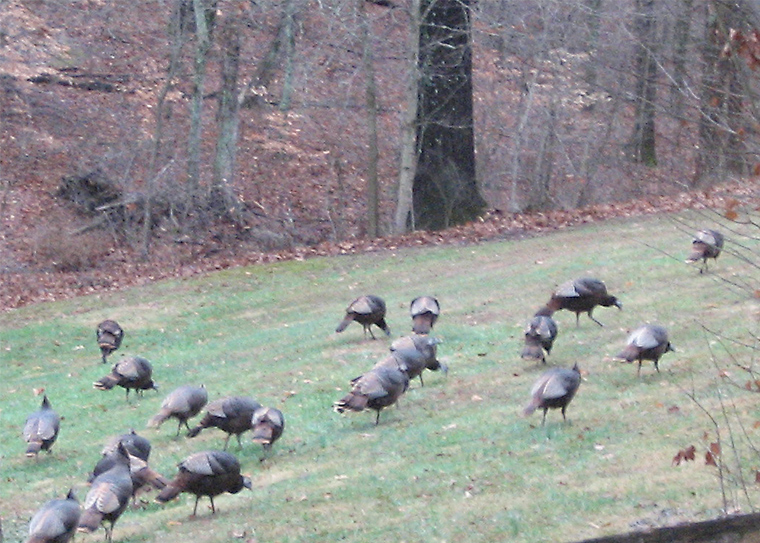
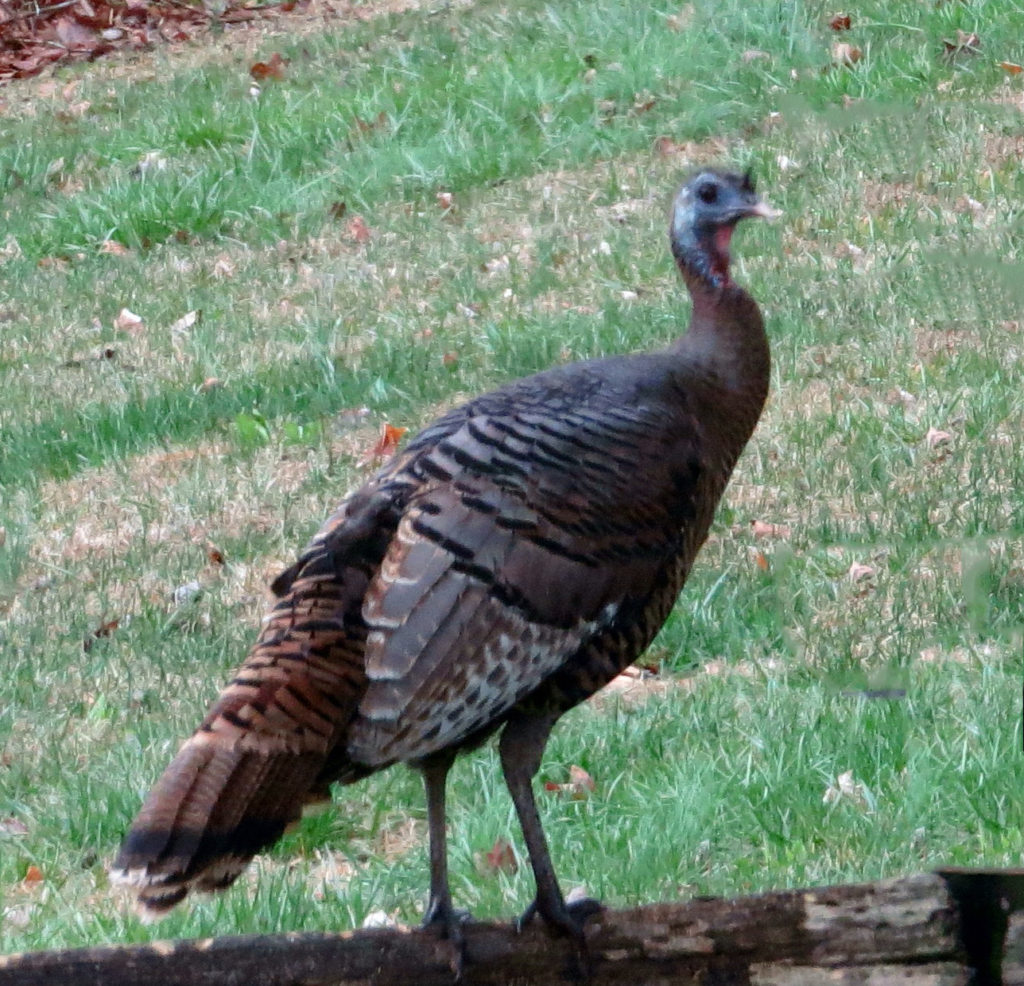
Wild Turkeys (Meleagris gallopavo) were also exterminated from our area before we were born. Their reintroduction has been a great success, and turkeys are now plentiful there. The top photograph is flock of turkeys passing through Charlie and Linda’s back yard, and the other photograph is a young one perched on the fence which goes around the part of the yard nearest the house.
It would not be fair to talk only about wildlife that have increased in number recently. I should also list some that have decreased during the same time period. One of these in the Northern Bob White Quail (Colinus virginianus) When I was young, we could often hear their distinctive call, and they were numerous enough to come to bird feeders in back yards. Now one seldom sees or hear the Bob White Quail.
The increase in Coyote numbers is often blamed for the decline in Bob White Quail numbers. Several studies have focused on this question. I could not find any information in the literature that Bob White Quail formed a major part of Coyote diets.
A study entitled “Shell’s Covert: Coyotes & Quail – Good, Bad or Neutral?” emphasized the complications involved when one attempts to determine whether coyotes are an important factor in Bob White Quail population For example, one could not now collect coyote stomachs in Souther Indiana and get any useful data on whether quail make up a large part of their diet, because there are no quail in our area for them to eat. Whether coyotes ate quail when the coyotes first arrived in our area is much harder to determine.
Another study is that of Scott E Henke entitled ” COYOTES: FRIEND OR FOE OF NORTHERN BOBWHITE QUAIL IN SOUTHERN TEXAS“. In this case there were quail in the area for coyotes to eat. I quote the abstract below.
Food habits of 407 coyotes (Canis latrans), intermittently collected in southern Texas from March 1994 to January 1997, were determined from coyote stomachs. Mammalian prey was the most prevalent diet item as calculated by frequency of occurrence and aggregate percent methods, followed by insects, vegetation, birds, and reptiles. The remains of northern bobwhite quail; (Colinus virginianus) or their eggs were found in only 12 coyote stomachs, which constituted 1% of the coyote diet as calculated by the aggregate percent method. Northern Bobwhite appear to be an incidental prey item for coyotes in southern Texas. Therefore, coyote removal programs designed to lessen quail depredation appear unwarranted.
It also seems to me, based on limited evidence from personal experience and conversations with friends, that Cottontail Rabbits (Sylvilagus floridanus) are less common than they formerly were. I will have to investigate this situation and report more information in a future post.
Discover more from A Naturalist's Journal
Subscribe to get the latest posts to your email.
